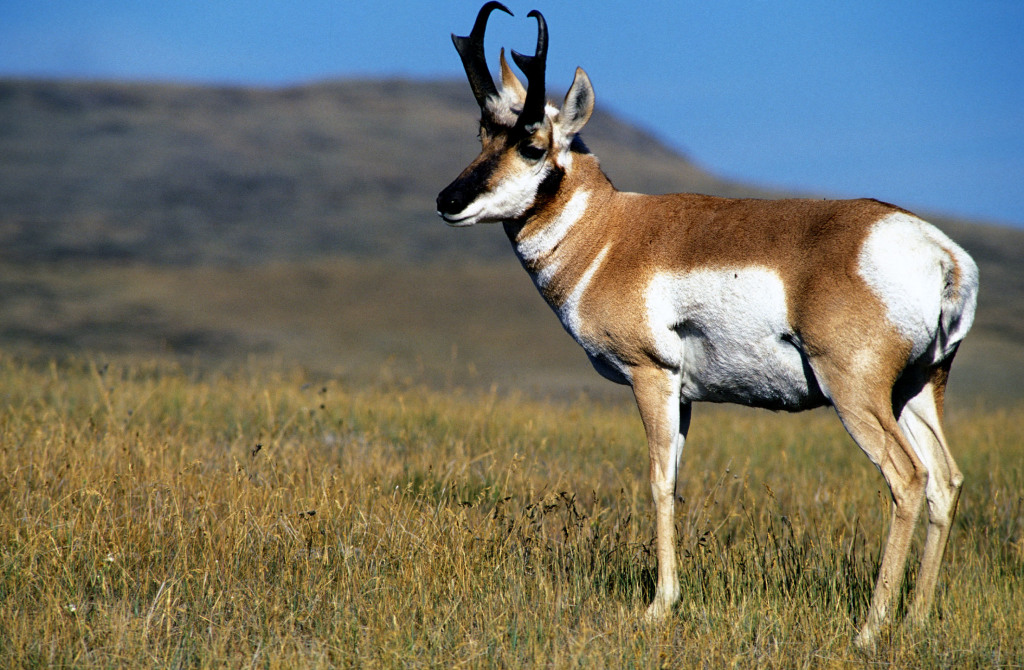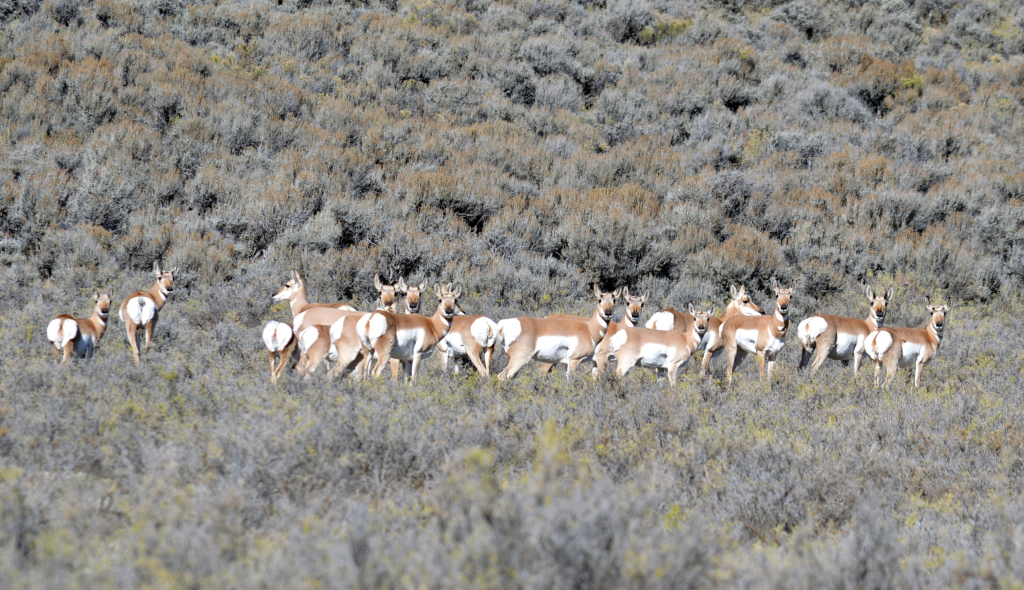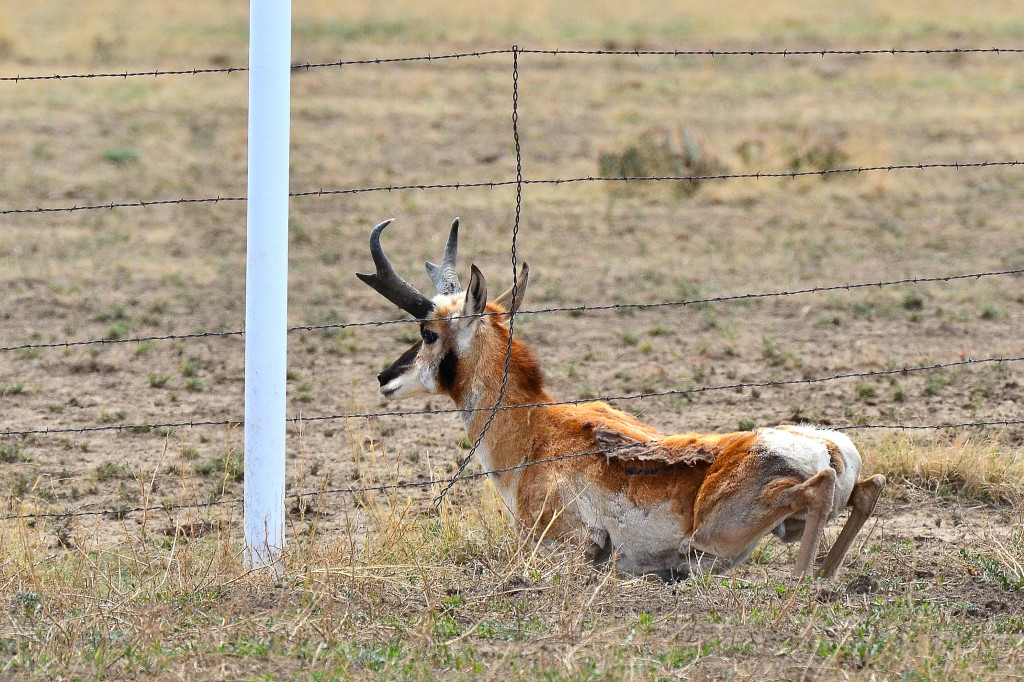Antilocapra americana

Photo couresy USFWS.
Pronghorn, commonly referred to as pronghorn antelope, are actually not Antelope at all and have no relation to the Antelopes found in Africa. Pronghorn are the only member of the family Antilocapra, though 5 subspecies are recognized across the North American continent. The most famous trait of the pronghorn is its speed, which can top 55 mph, and is noted as the fastest land mammal in North America.
Pronghorns typically reach a shoulder height of three feet and a weight of over 100pounds with males weighing slightly more than females. The hollow branched horns, from which the pronghorn gets its name, are shed annually.
After coming close to extinction in the 1800s and early 1900s efforts have been taken to help restore the population, though only to a fraction of its historic range. Today, pronghorn can be seen on the Carrizo Plain National Monument, where a herd was translocated from northeastern California in the late 1980s.
Habitat and Behavior

Photo by Theo Stein / USFWS
Pronghorn can be found on open grasslands and plains. These areas enable the pronghorn to effectively use its speed and its superb eyesight to avoid predators. The pronghorn also use the forbs and small scrubs of these areas as their primary food source. Historically, pronghorn were found in the millions across the grasslands and plains of western North America, similarly to the Bison.
During the winter months, pronghorn stay together in herds containing numerous bucks and does. However, in the spring, bucks start defending a territory and numerous does. After spending most of the spring and summer defending their territory and does from other bucks, breeding happens for a few weeks during the end of summer. Fawns are born the following spring.
Threats
In the 1800s a variety of anthropogenic factors, including livestock grazing, land being converted to agriculture, and hunting, lead to extreme declines in pronghorn populations. As with many species, habitat degradation and fragmentation impacted and continues to affect the pronghorn populations. Today, one of the major threats to the pronghorn are fences. Fences run for countless miles across the American west. The pronghorn, though adapted for a speedy escape, cannot jump well and often have their range limited by fences. Fences can limit the ability for pronghorn to find adequate food sources and protective cover for fawns. Additionally, fences can isolate populations and inhibit inter-herd migration, which is important to avoid inbreeding in smaller populations.

Photo by Larry Lamsa
Natural predators of pronghorn historically were wolves and other extinct megafauna. Today on the Carrizo Plain, coyotes are a threat to fawns only, since the young pronghorns have yet to develop the speed needed to escape from predators. These fawns primary defense against predation is their small size and camouflaged coloring that makes them nearly invisible while lying down in grasslands.
Conservation
In the 1990s over 200 pronghorn were translocated to the Carrizo Plain area, an historic habitat for the pronghorn. However, for the first decade this population suffered a steady decline, likely due to the threats mentioned above.
Volunteer groups on the Carrizo Plain along with the California Department of Fish & Game and the Bureau of Land Management have been working to remove or alter fences to benefit the pronghorn. As well, efforts are being taken to initiate radio collaring of the pronghorn to help study their movement patterns and better understand this iconic species.
Efforts are also underway at the Wind Wolves Preserve to help restore pronghorn habitat and eventually reintroduce them to the area. The preserve has already successfully reintroduced tule Elk and hopes to do the same for pronghorn in the near future.






